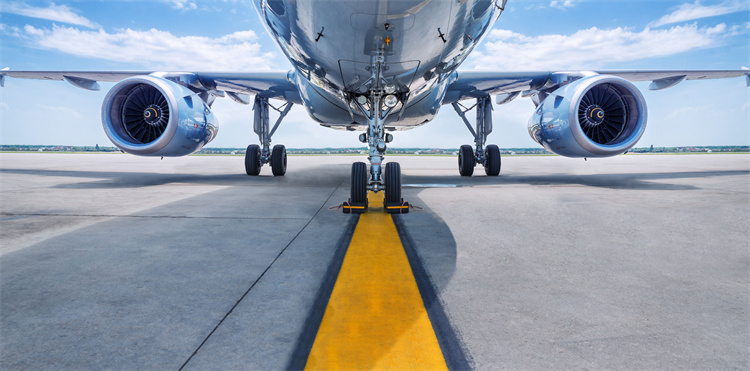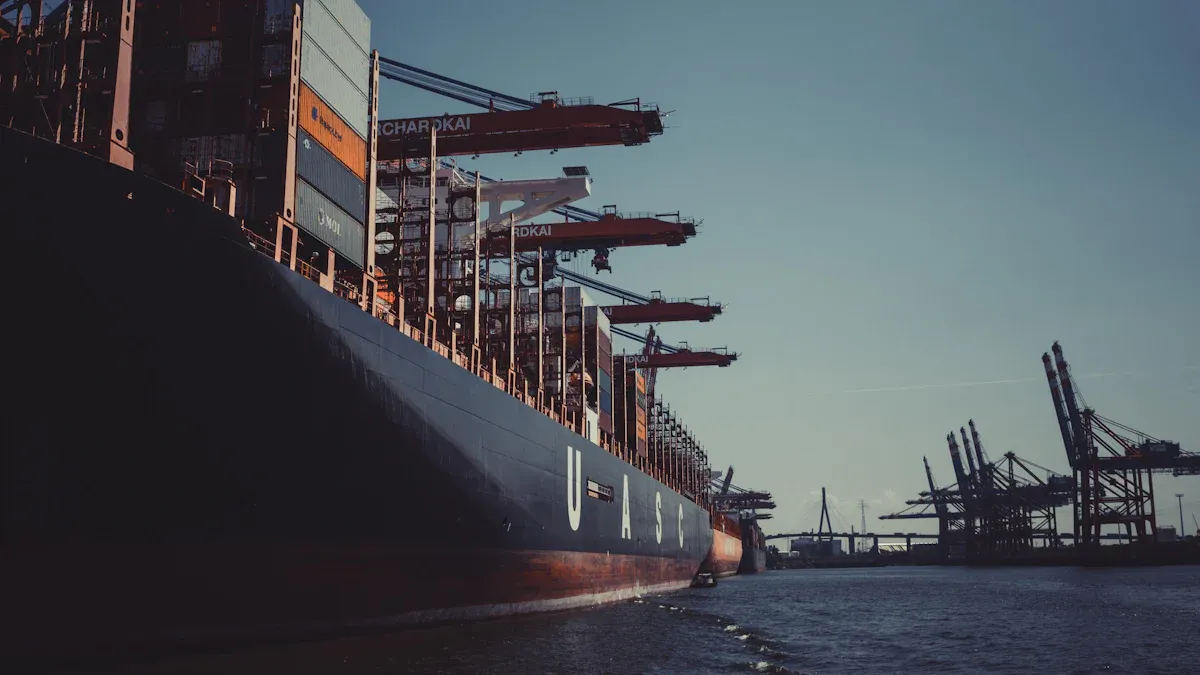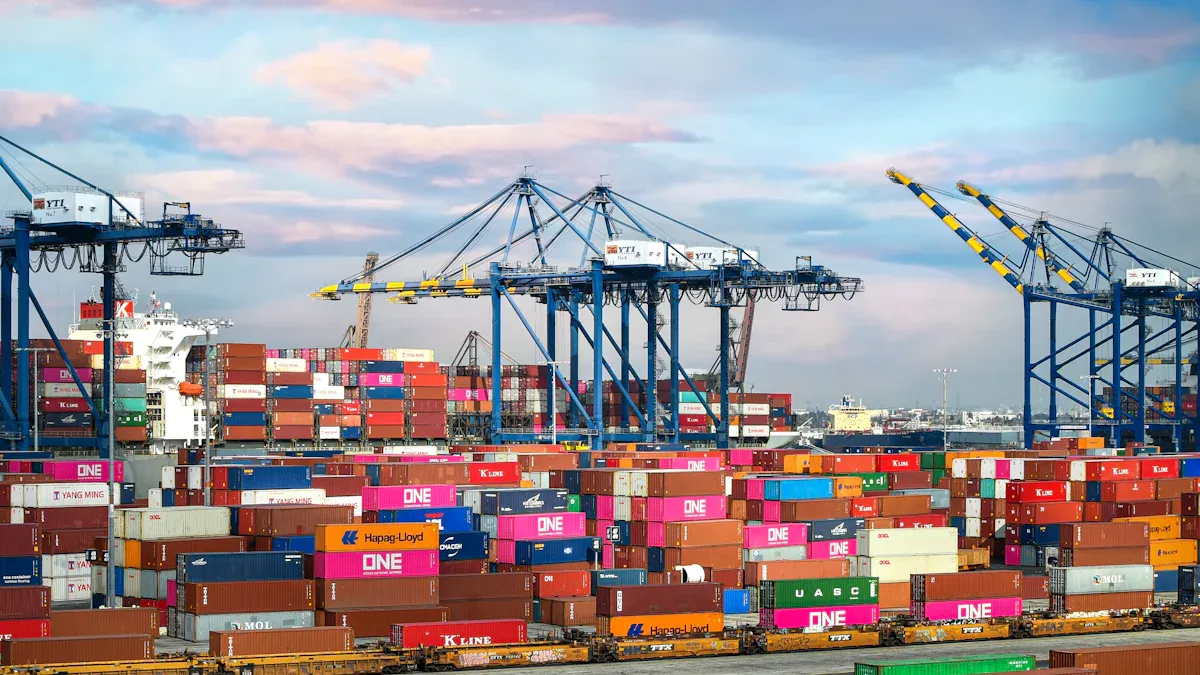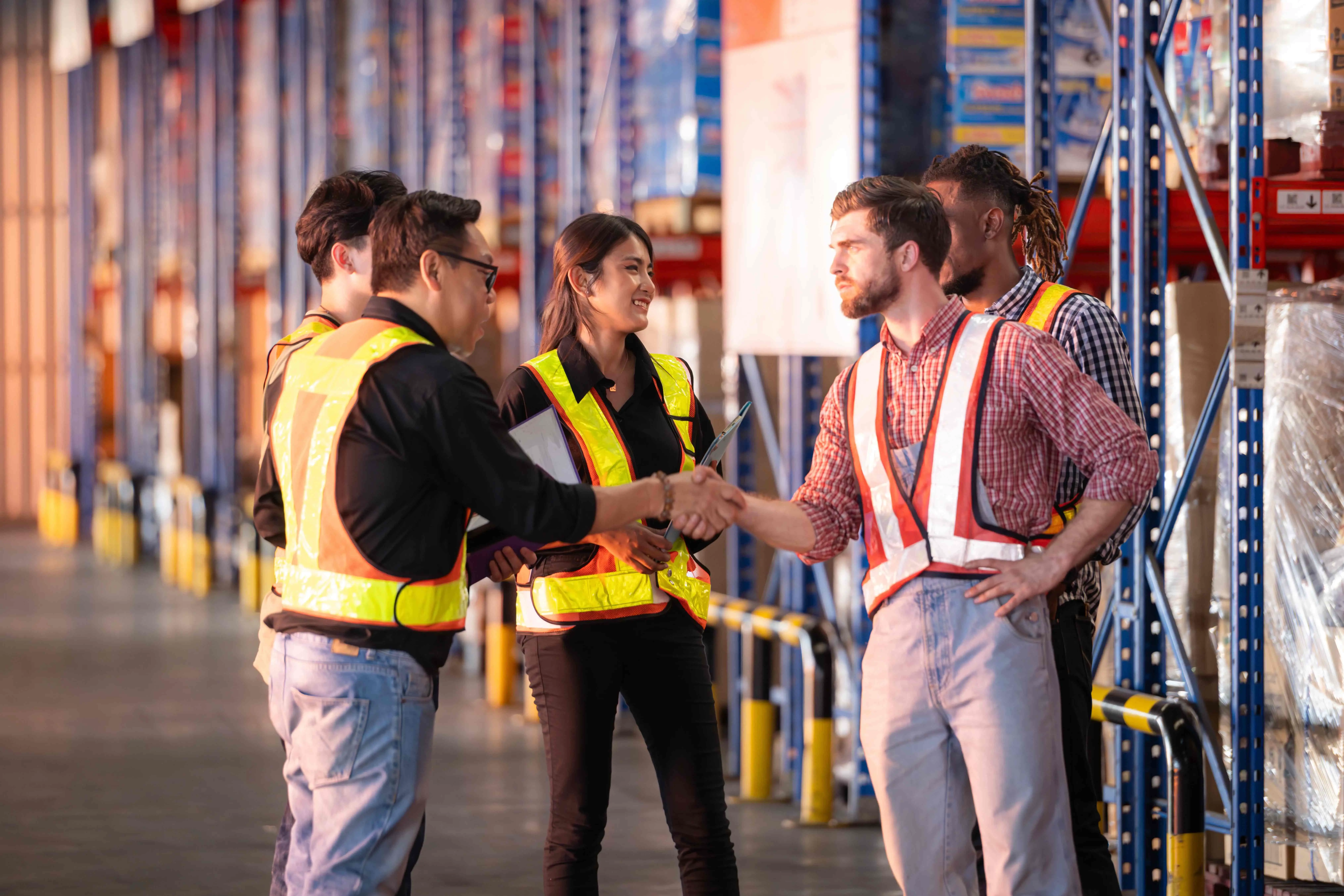Emerging Trends Transforming Logistics Companies in 2025

The logistics industry is evolving rapidly due to digital innovation and shifting consumer demands. By 2025, logistics companies adopting AI and IoT will see significant benefits. For instance, 80% plan to digitize workflows, while AI-driven forecasting reduces errors by 50%. Staying ahead of logistics technology trends ensures competitiveness in this dynamic landscape.
Key Takeaways
AI and robots help make logistics work better. Businesses save money and work faster by using these tools.
Being eco-friendly helps companies stand out. Green practices bring more customers and make brands look good.
Blockchain makes supply chains clearer. It builds trust and stops cheating.
AI and Automation in Logistics Companies

Optimizing Operations with AI
AI is revolutionizing logistics optimization by enabling smarter decision-making and improving operational efficiency. Companies increasingly rely on AI to analyze big data, predict demand, and optimize delivery routes. For example, AI-driven data analysis can reduce fuel consumption and greenhouse gas emissions by identifying the most efficient transportation routes. This not only cuts costs but also supports eco-friendly practices in the logistics industry.
The adoption of AI in supply chain management is growing rapidly. In 2023, global spending on AI systems reached $154 billion, and the market is projected to grow to $58.55 billion by 2031. These trends highlight the increasing reliance on AI for logistics optimization. Additionally, 44% of executives report cost reductions due to AI implementation, showcasing its transformative impact on logistics technology trends.
Automation in Warehousing and Transportation
Automation and robotics are reshaping warehousing and transportation processes. Automated systems improve productivity, enhance space utilization, and reduce safety stock levels. For instance, companies have reported a 25% productivity gain and a 10-20% improvement in space utilization after implementing automation.
The logistics industry is also leveraging transportation technology trends like autonomous vehicles and drones to streamline last-mile delivery. These innovations reduce delivery times and improve customer satisfaction. As warehouses grow larger to handle increasing volumes, automation becomes essential for managing operations efficiently.
Workforce Transformation through AI and Automation
AI and automation are not just about machines; they are transforming the workforce as well. Automating repetitive tasks allows employees to focus on higher-value activities, boosting productivity and morale. AI also personalizes training programs, creating tailored learning paths for employees.
By 2025, 20% of large enterprises will use AI for decision-making, enhancing agility and workforce capabilities. Microlearning opportunities provided by AI help employees develop skills in short, manageable sessions. This approach ensures continuous learning and prepares the workforce for the demands of digitalisation in logistics automation.
Sustainability and Green Logistics Trends

Eco-Friendly Transportation Solutions
You can see a growing shift toward eco-friendly transportation solutions in the logistics industry. Companies are adopting electric vehicles (EVs) and optimizing delivery routes to reduce emissions. This transition supports decarbonisation efforts and aligns with stricter government regulations on emissions. For example, many logistics companies now use EVs for last-mile delivery, cutting fuel consumption and improving air quality. Additionally, route optimization software helps minimize unnecessary travel, saving energy and reducing costs. These trends highlight how transportation innovations contribute to a greener future.
Reducing Carbon Footprints in Supply Chains
Reducing carbon footprints across the supply chain has become a top priority for businesses. By 2025, 45% of companies have identified sustainability as a critical objective. You can expect more logistics companies to focus on reducing scope 3 emissions, which include indirect emissions from suppliers and customers. Recycling, reusing, and refurbishing materials are becoming standard practices under the circular economy model. These efforts not only lower emissions but also enhance operational efficiency. Decarbonisation strategies like these are transforming supply chains into more sustainable systems.
Green Logistics as a Competitive Edge
Green logistics is no longer just a trend; it’s a competitive advantage. Customers increasingly prefer businesses that prioritize sustainability. By adopting green logistics practices, you can attract eco-conscious clients and improve your brand reputation. Decarbonisation efforts, such as transitioning to renewable energy sources and reducing waste, demonstrate your commitment to the environment. These practices also help you comply with regulations and avoid penalties. In 2025, companies embracing green logistics will stand out in the competitive landscape, proving that sustainability drives success.
Blockchain and Transparency in the Logistics Industry
Enhancing Supply Chain Visibility with Blockchain
Blockchain technology is revolutionizing the logistics industry by improving visibility across the supply chain. It creates a shared, tamper-evident ledger that allows you to track goods from origin to destination. This transparency ensures that every transaction is recorded and accessible to authorized participants. For instance, DHL uses blockchain to securely track and verify goods, reducing fraud risks and enhancing efficiency.
You can also benefit from blockchain's ability to provide real-time tracking. This feature improves traceability and ensures that all stakeholders have access to accurate information. By 2025, blockchain will play a critical role in addressing the growing demand for transparency in logistics technology trends.
Aspect | Description |
|---|---|
Supply Chain Transparency | Blockchain enhances transparency by providing a shared ledger that is tamper-evident. |
Traceability | It allows for tracking the provenance of goods throughout the supply chain. |
Trust among Stakeholders | The technology fosters trust among participants who may not inherently trust each other. |
Secure and Tamper-Proof Data Sharing
Blockchain ensures secure and tamper-proof data sharing, which is essential for reducing data fraud. Once data is entered into the blockchain, it cannot be altered. This immutability provides a secure environment for sharing sensitive information. You can trust blockchain to enhance transparency by allowing stakeholders to openly track transactions. This fosters confidence and reduces the risk of manipulation.
The logistics industry benefits significantly from this secure data-sharing capability. By 2025, companies adopting blockchain will experience fewer instances of fraud and improved operational efficiency. This trend highlights the importance of integrating blockchain into your supply chain operations.
Building Trust with Stakeholders through Transparency
Blockchain fosters trust among stakeholders by enabling open and transparent interactions. Every transaction recorded on the blockchain is visible to authorized participants, ensuring accountability. This transparency is especially valuable for industries where ethical resource use is critical.
You can rely on blockchain to document and share impact data without fear of alteration. This builds a foundation of confidence among stakeholders. By embracing blockchain, you demonstrate a commitment to ethical practices and efficient resource management. In 2025, trust-building measures like these will set you apart in the competitive logistics landscape.
E-Commerce Growth and Last-Mile Delivery Innovations
Impact of E-Commerce on Logistics Companies
The explosive growth of e-commerce has reshaped how logistics companies operate. You see this transformation in the increasing demand for faster and more efficient delivery services. In 2021, global retail e-commerce sales reached $4.9 trillion, and this figure is expected to grow by 56% to $8.1 trillion by 2026. This surge has driven logistics companies to expand their transportation networks and adopt innovative solutions.
Transportation accounted for over 70% of the e-commerce logistics service type segment in 2022. Roadways held the largest share, with over 52%, primarily due to last-mile deliveries. Airways are also gaining traction, with a projected growth rate of 24.8% CAGR, fueled by the demand for same-day and next-day delivery. To meet these trends, logistics companies are building warehouses closer to population centers and using advanced inventory management systems for real-time tracking.
Innovations in Last-Mile Delivery (Drones, Autonomous Vehicles)
Last-mile delivery innovations are revolutionizing the logistics industry. Drones and autonomous vehicles are at the forefront, offering faster and more cost-effective solutions. For example, autonomous delivery can reduce costs by 40%, addressing the high labor expenses that make up 50-60% of last-mile delivery costs.
The market for these technologies is growing rapidly. In 2023, it was valued at $18.7 billion and is projected to reach $144.2 billion by 2033, with a CAGR of 23.1%. Drones, in particular, are becoming more affordable. Current delivery costs of $13.50 per package could drop to as low as $1.50 with advancements. These innovations not only improve efficiency but also align with the trends of sustainability and customer satisfaction.
Meeting Consumer Expectations for Speed and Reliability
Consumer expectations for speed and reliability are shaping the future of logistics. Surveys show that delivery lead time significantly influences customer satisfaction and buying behavior. You can see this in the growing demand for same-day and next-day delivery options.
Reliability is equally important. Customers value accurate delivery information and consistent service. Logistics companies are addressing these needs by using route optimization software and real-time tracking systems. These tools enhance delivery efficiency and ensure transparency, helping you meet the high standards set by modern consumers. By prioritizing speed and reliability, you can stay competitive in 2025 and beyond.
Supply Chain Resilience and Diversification in 2025
Building Resilient Supply Chains Post-Pandemic
The pandemic exposed vulnerabilities in global supply chains, prompting companies to prioritize resilience. You can achieve this by enhancing process efficiency, increasing capacity utilization, and improving service levels. Many businesses have also reduced inventory costs by adopting AI-driven solutions. These technologies provide better visibility into operations, enabling you to anticipate disruptions and respond proactively.
Resilient supply chains are no longer optional. They are essential for navigating uncertainties in 2025. By leveraging advanced tools, you can streamline operations and ensure continuity even during unexpected challenges. This approach not only strengthens your supply chain but also builds trust with stakeholders.
Diversifying Suppliers and Logistics Networks
Diversification is a key strategy for mitigating risks in supply chain management. Companies are increasingly adopting a dual approach that combines local and global sourcing. This strategy reduces costs while enhancing agility in procurement decisions. Predictive analytics and cloud-based collaboration tools further support this trend by identifying risks and synchronizing real-time data.
Nearshoring has also gained traction as a way to reduce reliance on distant suppliers. It minimizes geopolitical risks and shortens lead times, making your supply chain more responsive. By diversifying your logistics networks, you can adapt to disruptions and maintain operational efficiency.
Leveraging Technology to Mitigate Disruptions
Technology plays a pivotal role in mitigating supply chain disruptions. Advanced tracking systems and real-time analytics provide valuable insights into the movement of goods. These tools help you identify bottlenecks, optimize routes, and make data-driven decisions. Automation and AI further enhance efficiency by streamlining processes and reducing costs.
Blockchain technology adds another layer of resilience by creating a tamper-evident ledger. It fosters trust among stakeholders and ensures transparency across complex supply chains.
By integrating these technologies, you can anticipate risks, improve customer satisfaction, and maintain a competitive edge in 2025.
Emerging Logistics Technology Trends: IoT, AR/VR, and Digital Twins
Real-Time Tracking and Monitoring with IoT
IoT is transforming logistics by enabling real-time tracking and monitoring of goods. Over 80% of logistics companies plan to integrate IoT to optimize inventory and prevent losses. Devices like sensors, RFID tags, and GPS trackers provide visibility into asset locations and conditions. For example, IoT sensors can monitor temperature and humidity during transportation, ensuring goods remain in optimal condition.
Continuous data collection allows logistics managers to identify delays and make quick decisions. This improves efficiency and reduces waste. IoT also supports predictive maintenance, helping you avoid costly equipment failures. By 2025, IoT will become a cornerstone of logistics trends, enhancing transparency and reliability across the supply chain.
AR/VR Applications in Logistics Training and Operations
AR and VR are revolutionizing logistics training and operations. These technologies make training 75% more engaging and improve skill retention by 90% after one month. For instance, AR overlays real-time information on physical environments, guiding workers through tasks like inventory picking. This reduces errors and boosts productivity by over 40%.
In operations, AR enhances security by providing live tracking of shipments. VR, on the other hand, accelerates onboarding by 60% and increases confidence in skills by 275%. These advancements make AR/VR essential tools for improving efficiency and accuracy in logistics.
Digital Twins for Supply Chain Optimization
Digital twins offer a virtual representation of physical supply chain processes, enabling you to simulate and optimize operations. Companies using digital twins report a 30% decrease in disruptions and a 15% reduction in logistics costs. These tools also improve inventory management by 35%, ensuring you meet demand without overstocking.
By analyzing real-time data, digital twins help you predict potential issues and test solutions before implementation. This proactive approach enhances service levels by 65% and minimizes risks. As digital twins gain traction, they will redefine how you manage supply chain trends in 2025.
JUSDA’s Role in Shaping Logistics Industry Trends
JUSDA’s Warehouse Solutions for 2025
JUSDA’s warehouse solutions set a benchmark for efficiency and innovation in 2025. You can rely on their advanced facilities, which span over 2.5 million square meters globally, to meet diverse logistics needs. These warehouses integrate cutting-edge systems like eVMI and JusLink, enabling real-time inventory tracking. This transparency helps you reduce holding costs and optimize capital usage.
JUSDA also offers value-added services such as picking, packing, and labeling, which streamline operations. Cleanroom facilities ensure compliance with stringent environmental standards, making them ideal for industries like electronics and medical health. By adopting JUSDA’s warehouse solutions, you can align with the latest trends in logistics while enhancing operational efficiency.
JusLink Intelligent Supply Chain and Real-Time Collaboration
JusLink, JUSDA’s intelligent supply chain platform, transforms how you manage logistics. It integrates IoT, cloud computing, and big data to provide real-time collaboration across the supply chain. This platform enhances visibility, allowing you to monitor every stage of the process.
Metrics like increased collaboration, lower inventories, and higher productivity highlight JusLink’s effectiveness.
Metric | Description |
|---|---|
Increased Collaboration | A key metric for assessing effectiveness in real-time collaboration. |
Lower Inventories | Reduces holding costs and improves cash flow. |
Higher Productivity | Enhances overall efficiency in operations. |
By leveraging JusLink, you can stay ahead of logistics trends and ensure seamless coordination with stakeholders.
Industry-Specific Solutions for Diverse Sectors
JUSDA tailors its solutions to meet the unique needs of various industries. Whether you operate in automotive, FMCG, or electronics, JUSDA provides specialized supply chain services. For example, their automotive logistics solutions address the complexities of just-in-time manufacturing.
You can also benefit from JUSDA’s expertise in managing cross-border supply chains. Their global network and advanced digital tools simplify customs processes and reduce delays. These industry-specific solutions help you adapt to evolving trends and maintain a competitive edge in 2025.

JUSDA Solutions
To provide you with professional solutions and quotations.
The logistics industry in 2025 will thrive on innovation, sustainability, and adaptability. You will see trends like automation and AI reshaping logistics practices, making operations more efficient. Companies are also adopting greener practices to meet consumer expectations and reduce environmental impact. By investing in fleet optimization and gaining supply chain visibility, you can minimize inefficiencies and optimize routes.
Sustainable logistics initiatives are reducing the industry's carbon footprint. Advancements in technology streamline operations while improving efficiency. These trends highlight the importance of embracing innovation to stay competitive. Companies like JUSDA lead the way with intelligent platforms and warehouse solutions, setting benchmarks for the future.
See Also
Key Trends Shaping Future Efficiency In Supply Chains
Transforming Logistics With AI: The Future Awaits
Understanding Logistics Risks: Key Trends To Watch
Enhancing Future Logistics Through Digital Innovations
Innovative Supply Chains: Transforming The Logistics Landscape
